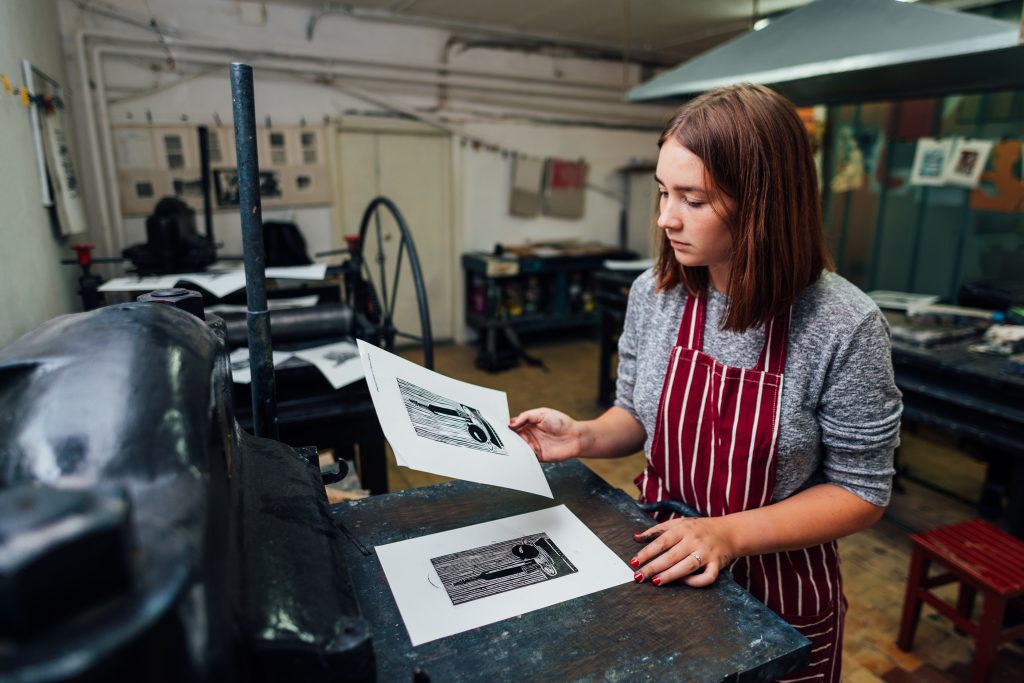The world of fine art printing is a mesmerizing realm where digital technology meets traditional artistry. Have you ever wondered how artists achieve such stunning prints that capture the essence and beauty of their original artwork? Well, wonder no more! In this article, we will delve into the art of printmaking, exploring the techniques, processes, and tools used to create exquisite fine art prints.
Throughout this article, we will not only explore the technical aspects of fine art printing but also delve into the creative decisions and artistic considerations that artists make when translating their original works into prints. From selecting the right paper and ink to mastering color calibration and achieving optimal print quality, there is a delicate balance between technical precision and artistic expression. So, join us on this fascinating journey as we uncover the secrets and intricacies of the art of printmaking.
Quality Considerations For Fine Art Printing
When it comes to fine art printing, quality is paramount. Artists, art enthusiasts, and professionals alike seek high-quality prints that accurately capture the vibrancy and essence of original artwork. Print shops and studios use advanced digital printers and printing methods to ensure gallery-quality prints with vibrant colors and exceptional print quality. The printing process involves using archival pigment inks and high-quality print media, such as art paper or canvas, to reproduce the artwork with precision and longevity.
Paper Quality And Printing Processes Used
Fine art printing is not just about the artwork itself, but also about the quality of the print. The paper used plays a crucial role in achieving the desired results. There are various paper quality options available for fine art printing, each with its own unique characteristics and properties.
One popular option is fine art paper, which is specifically designed for aqueous inkjet printing. It is made from high-quality materials and has a smooth surface that allows for vibrant colors and exceptional detail. This type of paper is commonly used by professional artists and art enthusiasts to create gallery-quality prints. It is available in a wide variety of finishes and weights, allowing for a range of possibilities in terms of look and feel.
Another substrate that is gaining popularity in the art printing world is aluminum. This lightweight and durable material is often used for dye-sublimation printing. The printing process involves transferring dye into the surface of the aluminum, resulting in vibrant and long-lasting prints. Aluminum prints offer a unique, contemporary look and are especially suitable for modern and abstract artwork.
The printing process for each substrate differs. Fine art paper printing typically involves the use of pigmented inks, which provide archival qualities and ensure the longevity of the print. On the other hand, dye-sublimation printing for aluminum prints involves the use of heat to transfer the dye onto the substrate, resulting in a vibrant and high-quality image.
When it comes to fine art printing, the choice of paper and printing process can greatly impact the final result. Whether it’s fine art paper for aqueous inkjet printing or aluminum for dye-sublimation, these options offer a range of possibilities for creating stunning, professional-quality prints.
Color Vibrance And Professional Artists’ Work Reproductions
When it comes to reproducing the vibrant colors of professional artists’ work, fine art printing is unparalleled. This technique utilizes high-quality materials, such as archival pigment inks and specialized art paper, to achieve optimal color vibrance and fidelity.
Archival pigment inks are a key component in fine art printing. These inks not only produce rich, saturated colors but also offer remarkable longevity. They contain pigments that are resistant to fading and ensure that the prints remain vibrant for years to come. By using archival pigment inks, fine art printers can accurately reproduce the intricate color combinations and delicate tonal variations found in professional artists’ original works.
Furthermore, the choice of art paper plays a crucial role in color vibrance and reproduction accuracy. Fine art paper, specifically designed for aqueous inkjet printing, offers a smooth surface that allows for exceptional detail and vibrant colors. Its high-quality and archival qualities make it the perfect substrate for capturing and showcasing the full spectrum of hues, shades, and tones originally intended by the artist.
In addition to using top-notch materials, fine art printing relies on specialized digital printers with advanced color management systems. These printers are specifically calibrated to capture every subtle nuance and detail present in the original artwork. Whether it’s the gradient of a sunset or the texture of a brushstroke, the precision and accuracy of these printers ensure that the reproduced prints faithfully represent the artist’s vision.
Specialized Digital Printers For Incredible Quality Results
When it comes to achieving incredible quality results in fine art printing, specialized digital printers play a critical role. These printers are specifically designed to handle the demands of reproducing artwork with precision and accuracy.
One notable example is the Epson 11880, a powerhouse printer known for its exceptional print quality and versatility. With its advanced MicroPiezo AMC print head, this printer is capable of delivering sharp details and smooth gradations. Moreover, its UltraChrome K3 pigment inks ensure long-lasting prints with a wide color gamut. The Epson 11880 also allows printing on various materials, including fine art paper, canvas, and even specialized media like film and fabric.
Another noteworthy technology in fine art printing is the dye-sublimation process, particularly used for producing aluminum prints. This method involves transferring dyes onto a special transfer paper, which are then sublimated onto a coated aluminum panel under high heat and pressure. This process ensures vibrant colors, exceptional detail, and a durable finish that lasts for years.
When it comes to top printer choices, both Canon and Epson offer excellent options. Canon’s imagePROGRAF PRO-1000, equipped with the LUCIA PRO pigment ink system, delivers stunning print quality and accuracy. It boasts a 12-color ink set, including four monochrome inks, and offers connectivity options such as Wi-Fi and Ethernet for seamless integration into a professional workflow. On the other hand, Epson’s SureColor P800 showcases its UltraChrome HD pigment ink technology, producing archival-quality prints with deep blacks and vibrant colors. It also features advanced media handling capabilities, allowing printing on various fine art papers and even poster board.
Working With Professional Printer Services To Achieve The Best Results
Working with professional printer services for fine art printing offers various benefits that ensure the best possible results. One of the primary advantages is the assurance of high-quality prints. Professional printers have access to state-of-the-art equipment, such as top-of-the-line wide-format printers and specialized printing technologies, which allows them to produce gallery-quality prints with vibrant colors and exceptional detail.
Additionally, professional printer services have expertise in choosing the right printing techniques, paper options, and ink technology for each project. They understand the unique needs of different art styles and subjects and can recommend the most suitable options for achieving the desired results. Whether it’s selecting the ideal printing method for a specific type of artwork or choosing archival-quality paper with the right texture and weight, professional printers offer valuable guidance to ensure optimal output.
Moreover, professional printer services stay up to date with the latest advancements in printing technologies. They have in-depth knowledge of different ink systems and their capabilities, allowing them to produce prints with superior color accuracy and longevity. This expertise ensures that the final prints meet the highest standards and serve as long-lasting representations of the artist’s vision.

Conclusion
In conclusion, the art of print is a captivating and timeless medium that allows artists to express their creativity and share their work with the world. Fine art printing offers a range of techniques and options that can enhance and elevate an artist’s vision, bringing their artwork to life in stunning detail and quality.


